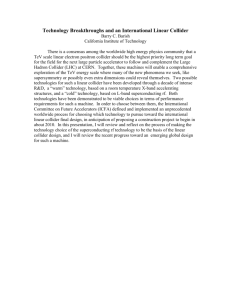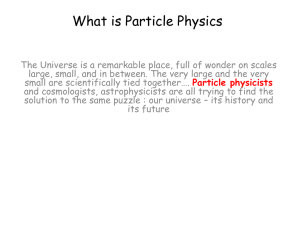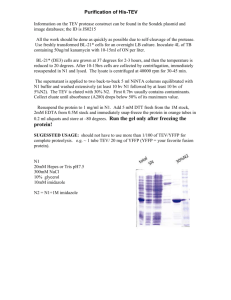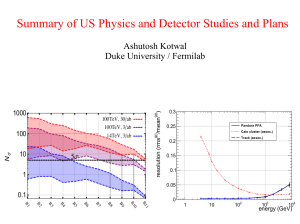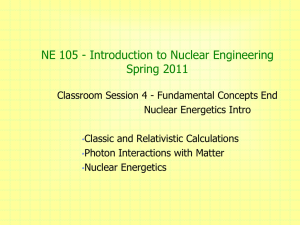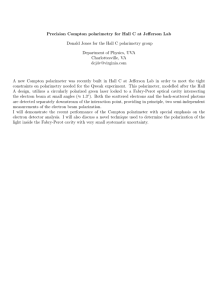Exam1 in 2001 - Oklahoma State University
advertisement
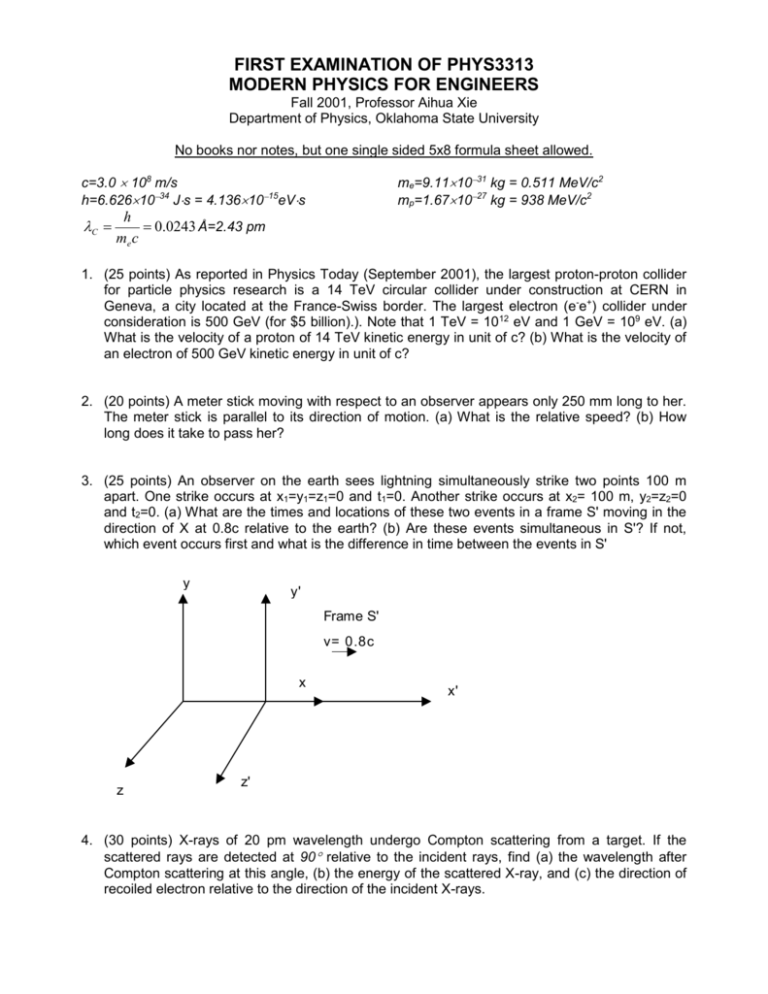
FIRST EXAMINATION OF PHYS3313 MODERN PHYSICS FOR ENGINEERS Fall 2001, Professor Aihua Xie Department of Physics, Oklahoma State University No books nor notes, but one single sided 5x8 formula sheet allowed. c=3.0 108 m/s h=6.6261034 Js = 4.1361015eVs C me=9.111031 kg = 0.511 MeV/c2 mp=1.671027 kg = 938 MeV/c2 h 0.0243 Å=2.43 pm me c 1. (25 points) As reported in Physics Today (September 2001), the largest proton-proton collider for particle physics research is a 14 TeV circular collider under construction at CERN in Geneva, a city located at the France-Swiss border. The largest electron (e-e+) collider under consideration is 500 GeV (for $5 billion).). Note that 1 TeV = 1012 eV and 1 GeV = 109 eV. (a) What is the velocity of a proton of 14 TeV kinetic energy in unit of c? (b) What is the velocity of an electron of 500 GeV kinetic energy in unit of c? 2. (20 points) A meter stick moving with respect to an observer appears only 250 mm long to her. The meter stick is parallel to its direction of motion. (a) What is the relative speed? (b) How long does it take to pass her? 3. (25 points) An observer on the earth sees lightning simultaneously strike two points 100 m apart. One strike occurs at x1=y1=z1=0 and t1=0. Another strike occurs at x2= 100 m, y2=z2=0 and t2=0. (a) What are the times and locations of these two events in a frame S' moving in the direction of X at 0.8c relative to the earth? (b) Are these events simultaneous in S'? If not, which event occurs first and what is the difference in time between the events in S' y y' Frame S' v= 0.8c x z x' z' 4. (30 points) X-rays of 20 pm wavelength undergo Compton scattering from a target. If the scattered rays are detected at 90 relative to the incident rays, find (a) the wavelength after Compton scattering at this angle, (b) the energy of the scattered X-ray, and (c) the direction of recoiled electron relative to the direction of the incident X-rays.

